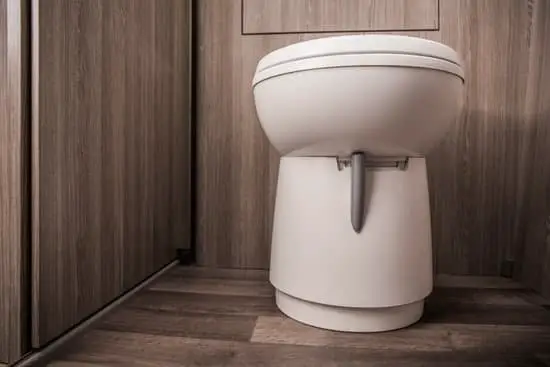If you are considering buying a Park Model RV, then it’s important that you know what they are. A park model is larger than other RVs and can be used for a variety of purposes, from a second home to an investment property. This blog post will answer all your questions about park models and help you decide if this type of RV is right for you!
What is a Park Model RV? A Park Model RV is a unique towable vehicle designed to provide temporary living quarters for short-term recreational, seasonal, and travel use. They are often much larger than regular RVs are normally semi-permanent in nature.
How big are Park Model RVs? They can be up to 44 feet long and weigh up to 20,000 pounds.
What are they used for? These RV’s offer a variety of uses such as second homes, vacation spots, rentals etc.
Can you buy them? Yes! You can purchase your own using an online search engine or by contacting individual dealerships directly. Alternatively, if you’re not sure what type of model would work best for your needs there is the possibility that someone in the area may have one available for rent or sale.
How much do they cost? Park models can be a great way to enjoy camping without some of the hassles. Park models start at around $24,900 for a second-hand model and go all the way up to $200,000. They’re still an affordable expense and allow for your family to have fun together while having easy access to home features like laundry facilities onsite.
What is the difference between an RV and a park model?
When you are deciding between a traditional RV and the park model variety, there is one major difference. The current trend in manufacturing for RVs of all sorts has been to make them more mobile with shorter stays at any particular location. Park Model varieties have been designed specifically for longer-term residency or traveling – not as much mobility as contemporary models offer!
Park Model RVs are typically available in sizes between 30 and 45 feet. These larger models can accommodate up to six people while the smaller ones offer only two or three-bedroom layouts. The cost for a new park model RV is around $200,000 which may seem pricey but it greatly depends on your budget! Plus if you buy older units at auctions they could be as low as $20K.
Can you live in a park model RV?
Yes, you can live in park model RVs in some counties or states. Park models can be set up anywhere an RV or mobile home is legal. They are popular as a mother-in-law apartment, cottage, vacation getaway lodge, and retirement homes!
Typically living expenses range from $700-2000 per month, which is impacted by whether it is the winter or summer, how many people are living in a park model RV, and if utilities are included. For example:
Parkside Mobile Home Park offers furnished models from $700 per month for one person up to $2200 per month. They have all of your needs covered with 24/hour security patrols onsite, sewer connections, water hookups, high-speed internet access, and phone services as well as cable TV service available at an additional cost.
Serenity Village has park models ranging from $1500-3000 depending on size; they allow pets too! The amenities include a clubhouse with kitchenettes and a laundry room. There’s also an outdoor pool, grills, and picnic tables.
Elderly people can live in a park model RV too! There’s an actual senior living community called Willow Glen Mobile Home Park where one-bedroom models start at $1100 per month for the cold months with winter rates starting around November to March. They charge more during summer as there is air conditioning available so these are perfect for retired folks who want to enjoy their retirement days without having to worry about maintaining or paying high utility bills on top of it all!
Are park model homes a good investment?
Park models are often marketed as an ideal investment opportunity for private use or commercial properties. For a relatively affordable price, starting at $20,000 you can enjoy the amenities of your own home without needing to worry about moving it!
Park models can be an attractive option for landlords looking to offer short-term rental opportunities. They are often cheaper than a traditional long-term lease and less time-consuming when it comes to paperwork and contracts.
For those buying park model homes as their personal residence, the investment may not only be affordable but also wise! Newer models come with all of the modern conveniences you would find in any other home, such as plush carpeting, high-quality kitchen appliances, or even granite countertops. But don’t worry about feeling like you’re sacrificing on space either – these units typically have up to 400 square feet of the living area combined with quaint outdoor spaces that still give off plenty of roomy feel.
The layout is designed so there’s everything you might need for living right on site, including a kitchen, bathroom, and bedroom. Some models even have features like built-in storage or outdoor patios that allow you to enjoy the outdoors without ever having to step foot off of your property!
Is a park model considered a tiny home?
Park model RVs are typically larger than tiny homes, but usually no more than 12′ wide and up to 400 square feet. Tiny homes aren’t actually homes- they’re just small buildings that can be placed on a foundation or even towed with an RV trailer!
Park model RVs require less land space because most of the structures are under 120 sq ft in size. Some RV parks and campgrounds also allow some park models as long as it meets their requirements for length (12ft max) width (8ft min), height limit(6feet).
How long does a park model last?
A manufactured home is a mobile, prefabricated structure that can be built in sections and transported to the site. Depending on upkeep and location, park model homes have an average lifespan of 30-55 years.
Park model homes have a smaller footprint than traditional houses, which also means they will consume less energy and require fewer resources to build. Park models are typically built on one level with stairs leading up into the house. This design is much more space-efficient in comparison to larger structures that often have multiple levels or lots of wasted “above ground” space.






